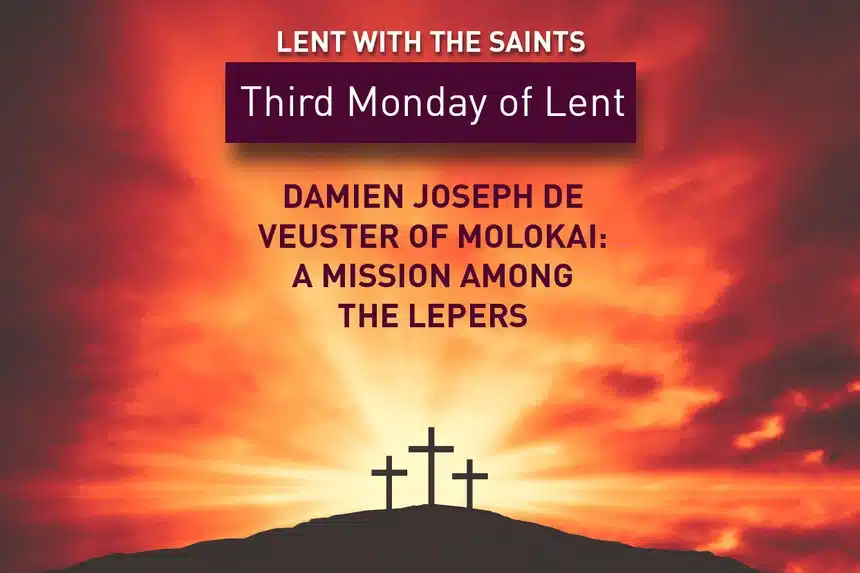2 Kings 5:1–15a; Psalm 42:2–3; 43:3–4; Luke 4:24–30
Leprosy is a disease that gets a lot of attention in the Bible. Jesus, who himself healed lepers, cites the story of the cure of the Syrian leper, Naaman, in today’s Gospel, as he challenges his hometown audience with the rejection of prophets in their native place, while foreigners like Naaman receive God’s favor.
In modern times leprosy, or Hansen’s disease, is treatable, but at the time of St. Damien of Molokai it was still feared. Those suffering from the disease were kept as far as possible from others, as on the Hawaiian island of Molokai, on a remote, inaccessible peninsula.
It was there that the Belgian missionary Damien came, fulfilling a lifelong dream of mission work. Ordained in Honolulu in 1864, he came to the leper colony nine years later. At first part of a rotating team of chaplains, he later settled into a permanent ministry there. The story of the end of Damien’s life is well known. In 1884 he contracted leprosy himself, and could then address his flock, “We lepers….” He died five years later, in 1889, and has been acclaimed in both Hawaii and in his native Belgium.
Damien teaches us, as Pope John Paul II declared at his beatification, that “holiness is not perfection according to human criteria; it is not reserved for a small number of exceptional persons. It is for everyone.” This is a good thought to ponder throughout Lent.
Today’s Action
Who are the “lepers” in your life? Plan some form of outreach to those you usually avoid.
Prayer
Healing God, do not let us shrink from those who may appear disfigured in body or troubled in spirit.
Lead us among them and show us how to embrace them with love.
Amen.








